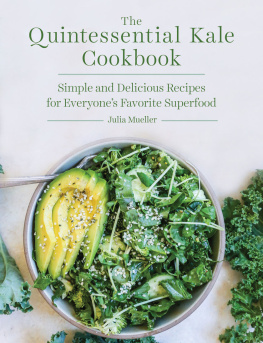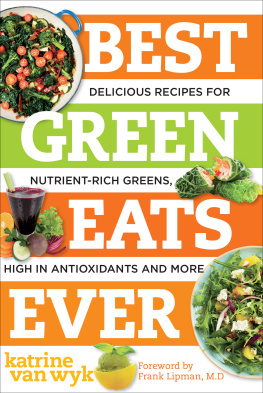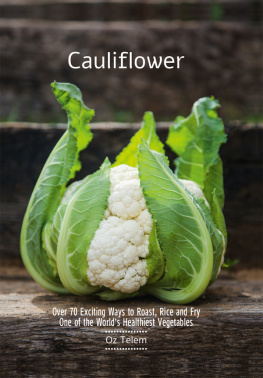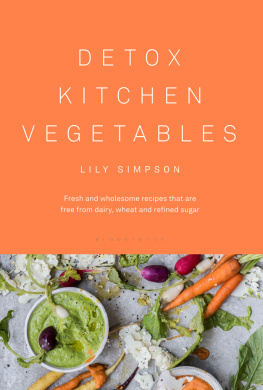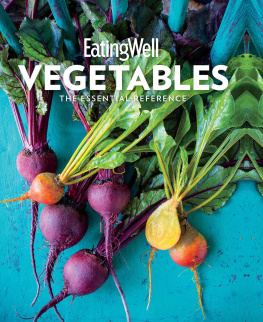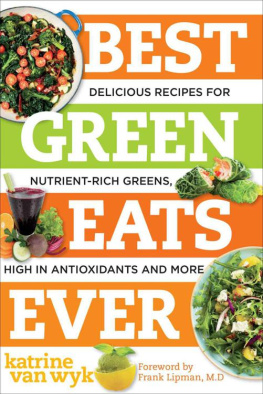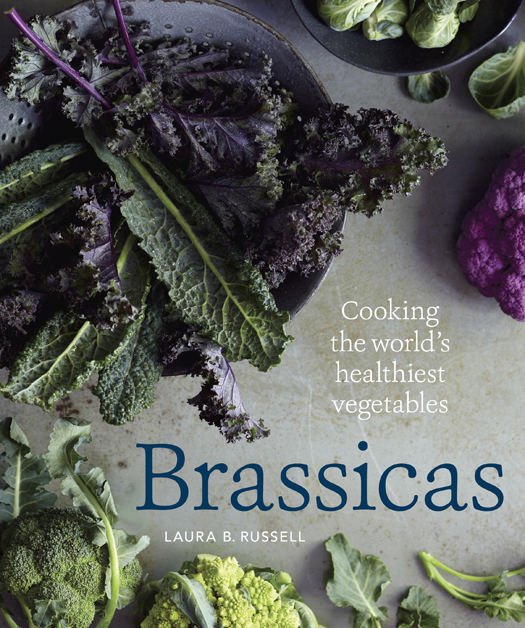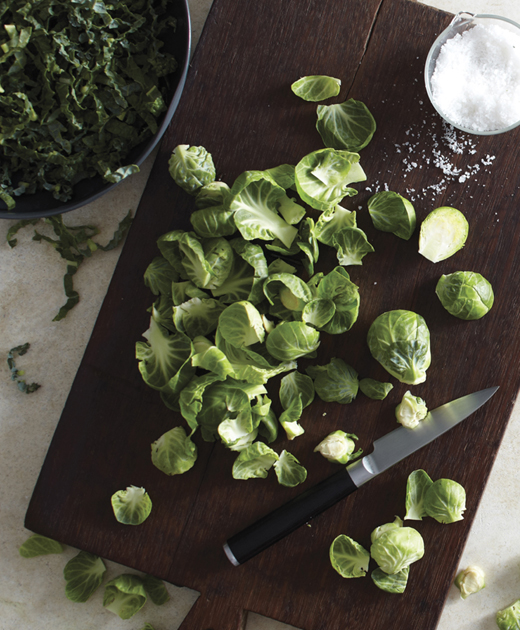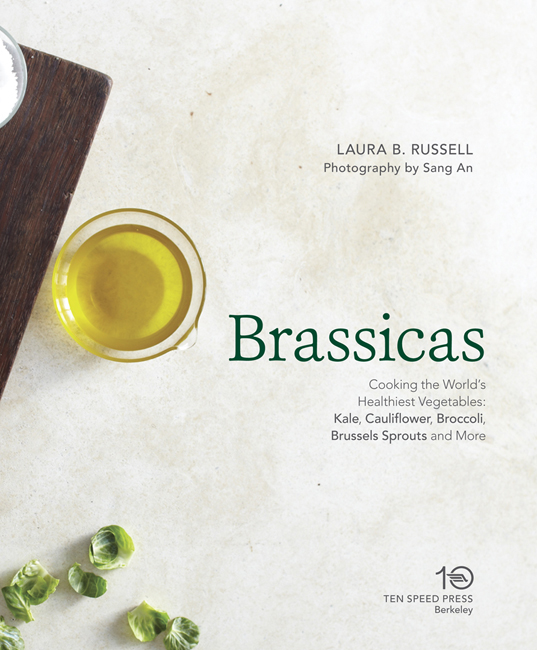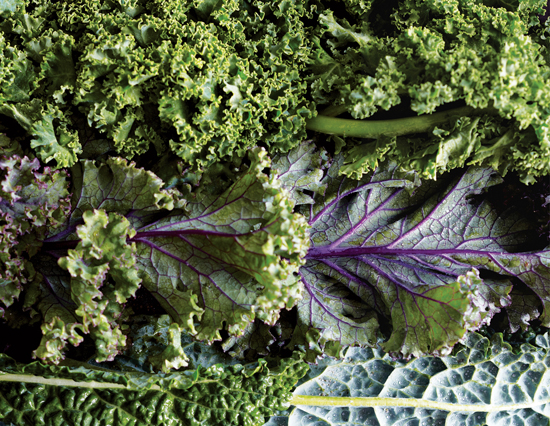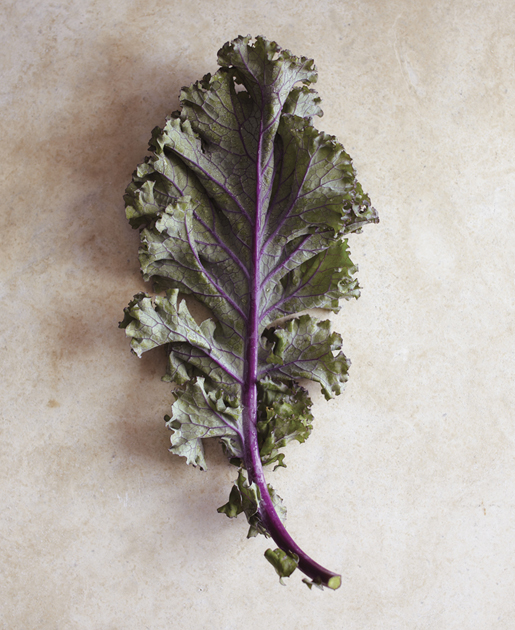Copyright 2014 by Laura B. Russell
Photographs copyright 2014 by Sang An
All rights reserved.
Published in the United States by Ten Speed Press, an imprint of the Crown Publishing Group, a division of Random House LLC, a Penguin Random House Company New York.
www.crownpublishing.com
www.tenspeed.com
Ten Speed Press and the Ten Speed Press colophon are registered trademarks of Random House LLC
Library of Congress Cataloging-in-Publication Data
Russell, Laura B.
Brassicas: cooking the worlds healthiest vegetables: Kale, Cauliflower, Broccoli, Brussels Sprouts and More Laura B. Russell. First edition.
pages cm
Includes bibliographical references and index. 1. Cooking (Vegetables) 2. Brassica. I. Title.
TX801.R87 2014
641.65dc23
2013031277
Hardcover ISBN: 978-1-60774-571-6
eBook ISBN: 978-1-60774-572-3
Food Styling by George Dolese
v3.1
For William and Audrey
Having children who appreciate good food is a dream come true. I love fielding your requests for homemade waffles on weekdays and even your eleventh-hour calls for braised rabbit or lamb rag. Now, if you would only eat more brassicas
Contents
Foreword
BY REBECCA KATZ
W hen Hippocrates said Let food be thy medicine, and medicine be thy food, theres little doubt in my mind that he was referring to foods drawn from the brassica family. Ounce for ounce, brassicas contain more healing properties than any other branch of food. Were not just talking your basic building blocks of vitamins and mineralsthough brassicas are full of thesebut foods also rich in phytochemicals that act as anticarcinogenics (anticancer), anti-inflammatories, and promote liver detoxification.
Even though these foods have been around for eons, its only in the last few years that science is unraveling all the goodness that brassicas have to offer. In fact, if youre reading about brassicas here for the first time, consider yourself ahead of the curve; I recently spoke to an audience of 300 nurses, and when I asked for a show of hands of those who knew what brassicas were, maybe a dozen hands went up.
Why is there so little public awareness of these superfoods? Maybe brassicas are in need of a good PR campaign, la the dancing California Raisins; all I know is theres plenty of raw material to work with. There are more than a dozen brassicas youve probably heard of, including veggies such as broccoli, cauliflower, cabbage, and Brussels sprouts. Each is a nutritional powerhouse. Broccoli warehouses vitamin K, essential in promoting bone health and reducing the impact of osteoporosis. Cauliflower is loaded, as are many brassicas, with glucosinolates that keep the immune system from overreacting: Such overreaction may be a major player in wrecking health, as it can lead to the kind of chronic inflammation now being linked to cardiovascular disease and certain cancers. In fact, studies show glucosinolates in brassicas may play a role in knocking down a host of cancers, including those that occur in the lungs and alimentary canal (a fancy name that means our entire 20-foot-long digestive tract). Cabbage is rich in a specific phytochemical, indole-3-carbinol, which promotes the livers removal of estrogen from the body, a benefit to women concerned with hormone-related breast cancer. Brussels sprouts have chemicals believed to play a role in keeping the bodys DNA intact and functioning properly.
In a sense, brassicas are like tiny mechanics, constantly doing tune-ups throughout the body. We certainly need the help; cellular metabolism is amazing but messy, constantly spewing forth toxic by-products that need to be flushed from the system.
A brassica such as kale is a one-man maintenance shop; its high fiber binds with cholesterol to sweep unnecessary fat out of the body, and its been shown to inhibit inflammation associated with arthritis.
I could go on and on, citing study after study. It doesnt matter which brassica youre looking atcollard greens, horseradish, arugula, even wasabithe health benefits are enormous. Which begs the question: if brassicas are so good for you, why do we let these power hitters so often ride the pine instead of making their way to the plate?
The simple answer is that, at first glance, brassicas are often pretty darn unwieldy. The aforementioned kale is a big mound of leaves, cabbage looks like a bowling ball, and purple cauliflower resembles something youd see in a science fiction movie or perhaps a Zombie flick. Braiiiiiiiinnnnnsssssss!!!!
It takes a certain amount of culinary courage to go one on one with a brassica for the first time. You can feel like you need a machete, but as Laura Russell so wonderfully explains, a sharp large knife and a good cutting board can whittle any brassica down to size quickly and efficiently. Aside from their sheer bulk, brassicas have a reputation for being bitter tasting, notably for a sizable percentage of the population who are so-called supertasters, aka, folks born with extremely sensitive taste buds. Lets face it, most of us encountered brassicas when we were young, and if the cook didnt know how to counter the pungency we ended up looking at the brassica with disdain, a nasty pill of culinary medicine to be swallowed.
Thats why it is such a delight to see Russell elevate the brassicas taste to a place commensurate with their superstar nutritional prowess. Each recipe in this book delivers on that promise, and as a cook I can appreciate the time and effort that Laura has put into these creative recipes. I often think of brassicas as the emeralds of the food world, so valuable are they to maintaining and promoting health. In this book, Laura Russell allows all of us to partake of their wealth, with dishes that will entice us to go for our greens, again and again.
For this, I can only give thanks. Enjoy!
Rebecca Katz, MS
author of The Longevity Kitchen and Cancer Fighting Kitchen
Introduction
T here has never been a more important time to make the connection between food and health. With the sharp rise in obesity, food allergies and sensitivities, and a growing distrust of processed foods, the Standard American Diet (SAD) is nearing an inflection point. Thankfully, a national dialogue has been stirred that puts the responsibility for what we eat firmly on our own shoulders. As that discussion matures, people will come to realize that their food choices are not only about immediate sustenance, but also the best sources of preventative medicine for long-term well-being.
Despite this promising dialogue, there is a growing disconnect between the overwhelming nutritional choices available to us and our ability to end up with a healthful meal. We surf through this information explosion, and deal with frequently contradictory dietary directives, yet fewer of us are equipped with the time or the skill set to make our real-life kitchens work. Consequently, when faced with the straightforward instruction to eat more vegetables, its hard to know where to begin.



